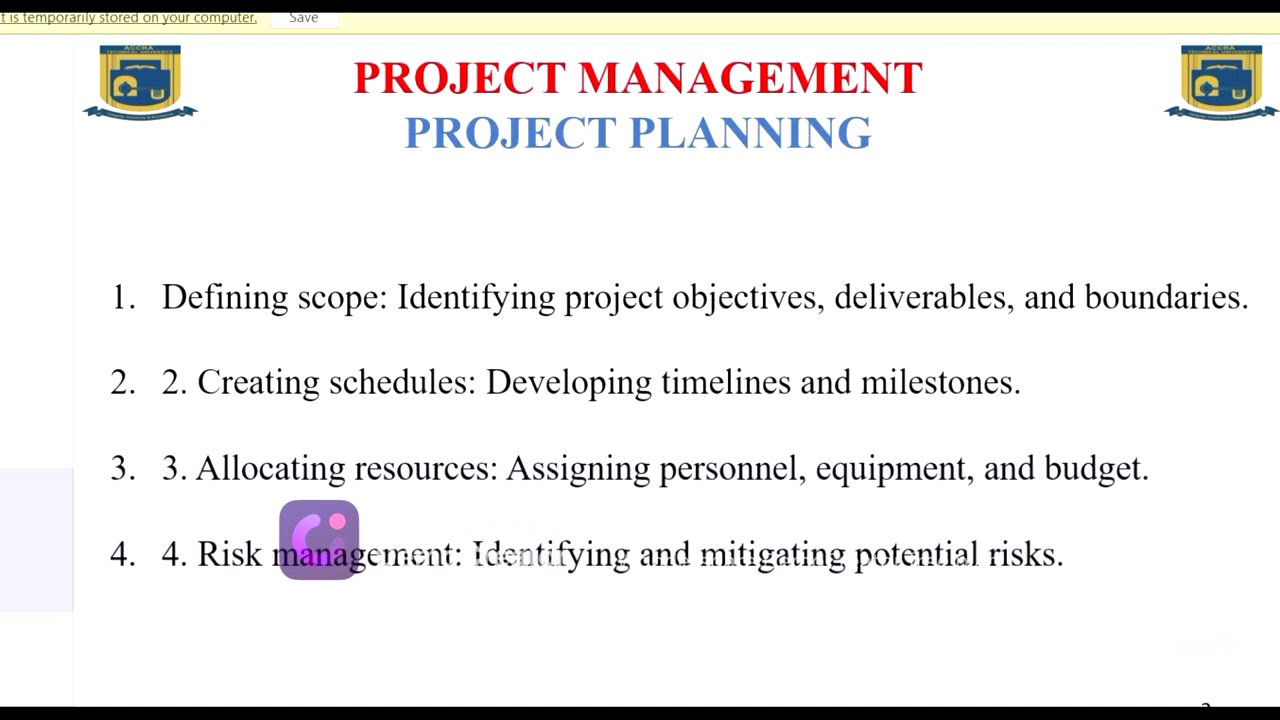TLDR;
This lecture covers the internal rate of return (IRR) as a project evaluation metric, comparing it to net present value (NPV). It also touches on project planning, defining scope, creating timelines, allocating resources, managing risks, and addressing potential conflicts within projects, including their sources, types, and consequences. An assignment is given to calculate IRR using Excel.
- IRR is the discount rate at which the net present value of a project equals zero.
- Project planning involves defining scope, creating timelines, allocating resources and managing risks.
- Conflicts in projects can arise from differences in goals, priorities, values and communication styles.
Introduction to Internal Rate of Return (IRR) [0:01]
The lecture introduces the internal rate of return (IRR) as a method for evaluating projects, building upon the previous discussion of net present value (NPV). IRR is defined as the discount rate at which the net present value of a project equals zero. When making decisions using IRR, it's important to ensure that the internal rate of return the project is expected to generate is higher than the assumed discount rate; if it's lower, the project is not considered viable.
IRR Calculation in Excel [2:13]
The lecturer demonstrates how to calculate IRR using Microsoft Excel, referencing project A and project B from a previous class exercise. The IRR formula in Excel is used to determine the internal rate of return for a series of cash flows, both positive (revenue) and negative (costs). For project A, the calculated IRR is 47%, while for project B, it's 31%. Both projects are deemed profitable since their IRR values exceed the assumed discount rate of 8%. However, project A is more profitable based on IRR, contrasting with the NPV method, which favoured project B.
Assignment on IRR Calculation [6:33]
An assignment is given to the students to manually calculate the IRR for projects A and B using the correct Excel formula, with the expected answers being close to 47% and 31% respectively. The lecturer will check the completed assignments in the next class.
Project Planning: Defining Scope, Timelines, Resources, and Risk Management [7:45]
The lecture transitions to project planning, emphasising the importance of defining the project scope, identifying objectives, deliverables, and boundaries. Creating timelines with milestones is crucial for project reliability. Allocating resources, including personnel, equipment, and budget, is also essential. Risk management involves identifying and mitigating potential risks, such as weather-related issues affecting construction.
Conflict in Projects: Sources, Types, and Consequences [10:57]
The lecture addresses conflict in projects, identifying sources such as differences in goals, priorities, values, and communication styles. Types of conflict include task-related, relationship-related, and process-related conflicts. Consequences of conflict can include delayed timelines and decreased morale, potentially leading to project failure. The lecture concludes by reiterating the importance of completing the IRR calculation assignment.









